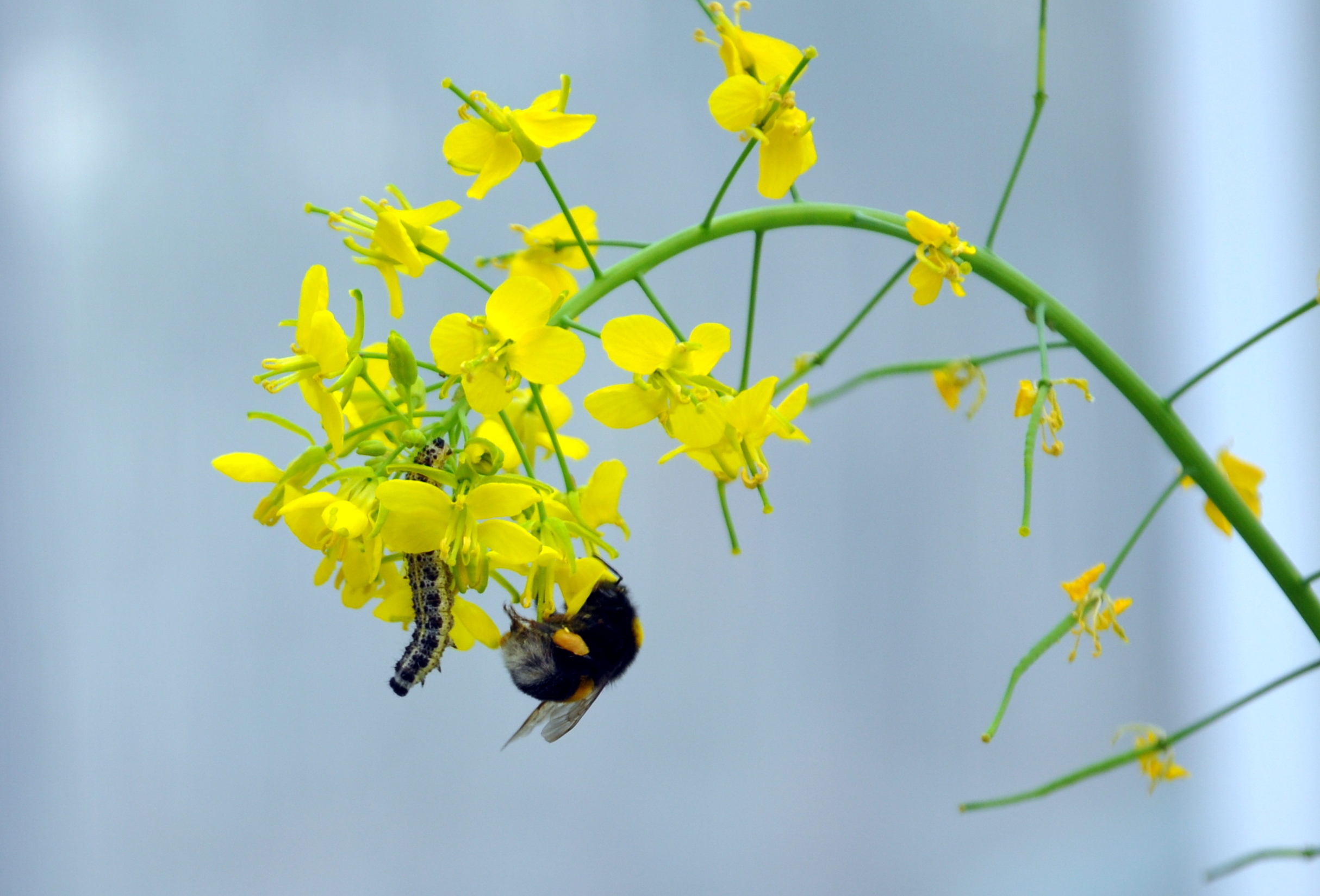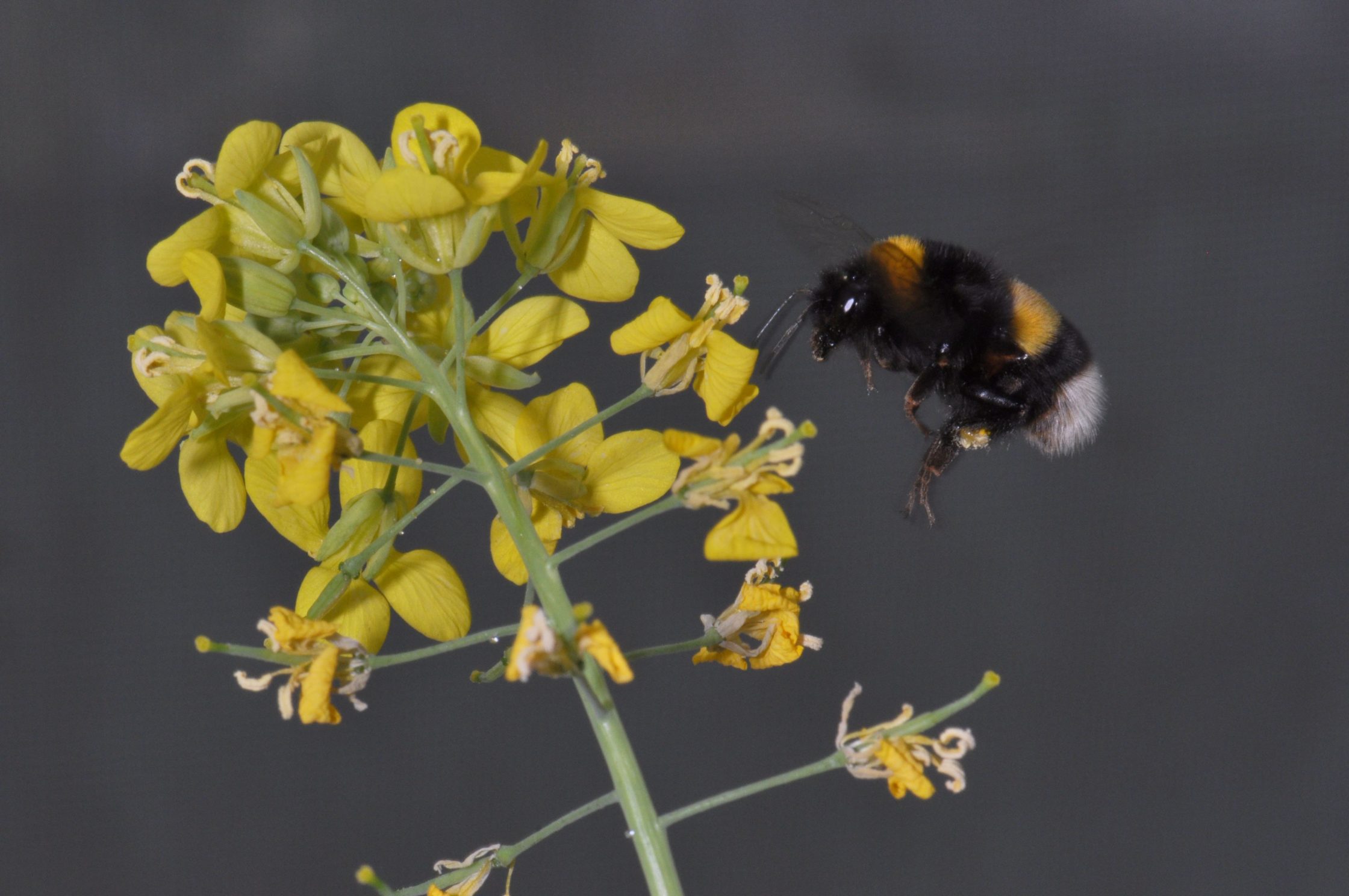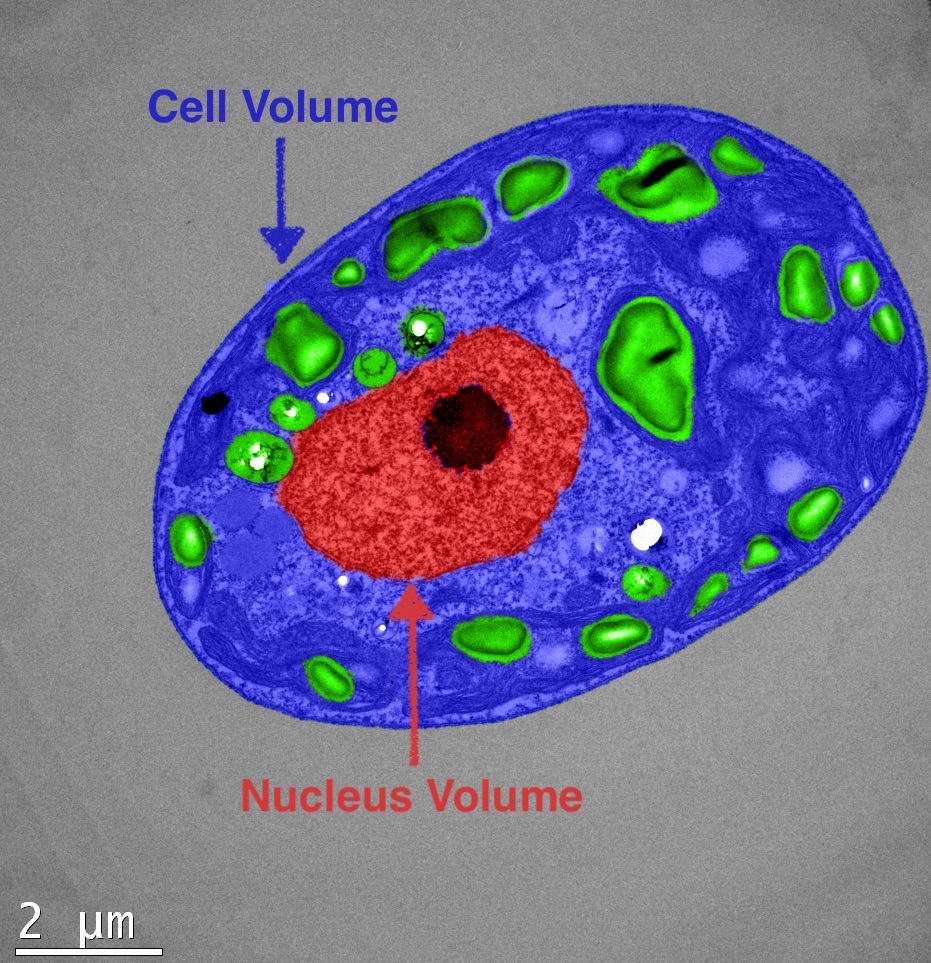A new study published in Evolution Letters shows that when plants evolve under different pollination regimes, their responses to herbivory also differ. Florian P Schiestl tells us more.
What happens when a herbivore starts feeding on a plant? Most often, plants respond by upregulating their defense mechanisms, such as increasing their toxicity or producing more defensive hairs. Interestingly, such improved defense often comes at the cost of decreased flower display, such as flower size or volatile signaling, and, as a consequence, reduced pollinator attractiveness.
Traditionally, such plasticity after herbivore attack is thought to have evolved through selection imposed by herbivores. If herbivores invariably attack plants for many generations, genotypes with constant high defenses enjoy an advantage, because they don’t lose time with upregulating defenses while herbivore slowly destroy them. As a consequence, non-plastic, high defense genotypes become more common and plastic genotypes decrease in the population. In populations where herbivores attack variably and “unpredictably”, the opposite scenario will take place, and plants with plastic defenses will be favored, because defense is costly and they can use their resources more efficiently, for example by investing in pollinator attraction and seed production.
In our recent paper in Evolution Letters we show that alongside herbivores, pollinators also strongly influence the evolution of herbivore-induced plasticity. We used plants originating from an experimental evolution study, where they evolved for six generations with or without constant (predictable) herbivory, and with either hand pollination or bumblebee pollination. These plants were infested with herbivores and then their induced responses measured. Interestingly and unexpectedly, the presence/absence of bumblebees had the strongest effects on herbivore-induced responses of several traits, both for defense traits (toxic compounds) as well as for floral traits. Overall, plants with bumblebee pollination had more plastic traits and showed stronger responses to herbivory than those with hand pollination.

A plant (Brassica rapa) being simultaneously visited by a pollinator (Bombus terrestris) and eaten by a herbivore (Peiris brassicae).
We also found an association between trait values and their plasticity, such that for traits that increased after herbivory (defense traits), high trait values tended to be associated with lower plasticity, and for traits that decreased after herbivory (mostly floral traits), high trait values were associated with higher plasticity. This result points towards a metabolic trade-off between the evolution of traits and their plasticity. When plants evolve high defenses, they are not able to upregulate them a lot anymore. On the other hand, those plant individuals with large flowers and strong scent emission, also suffer most under down-regulation of these traits as a side-effect of herbivory.
These results show how defense and pollination are linked in many ways in plants: first, through the metabolic costs of either producing defense compound or attractive flowers, and secondly through the evolutionary link of pollinator-favored floral traits and herbivore-induced plasticity in defense.
Professor Florian P Schiestl is based at the Department of Systematic & Evolutionary Botany, University of Zürich, Switzerland. The original article is freely available to read and download from Evolution Letters.


